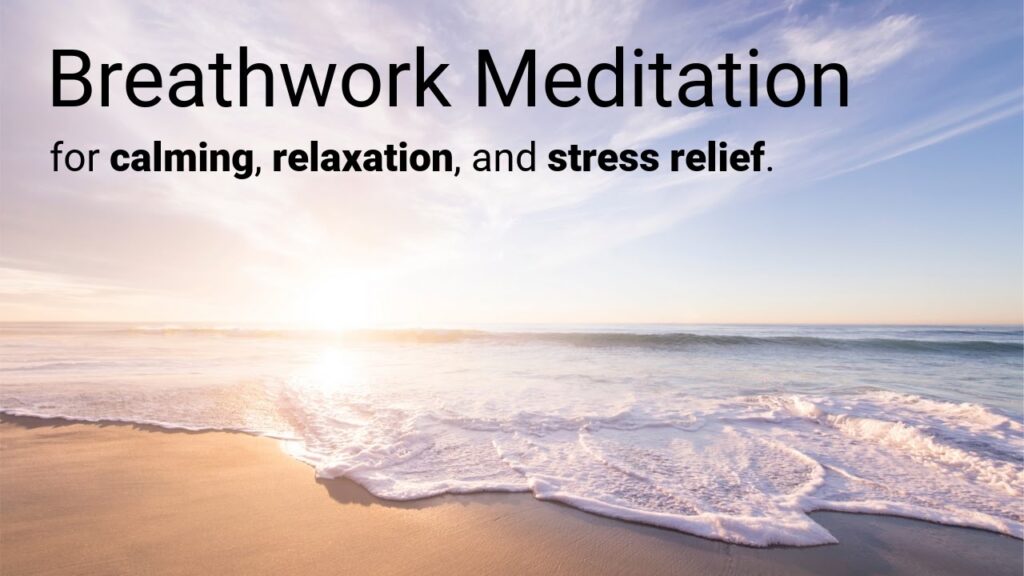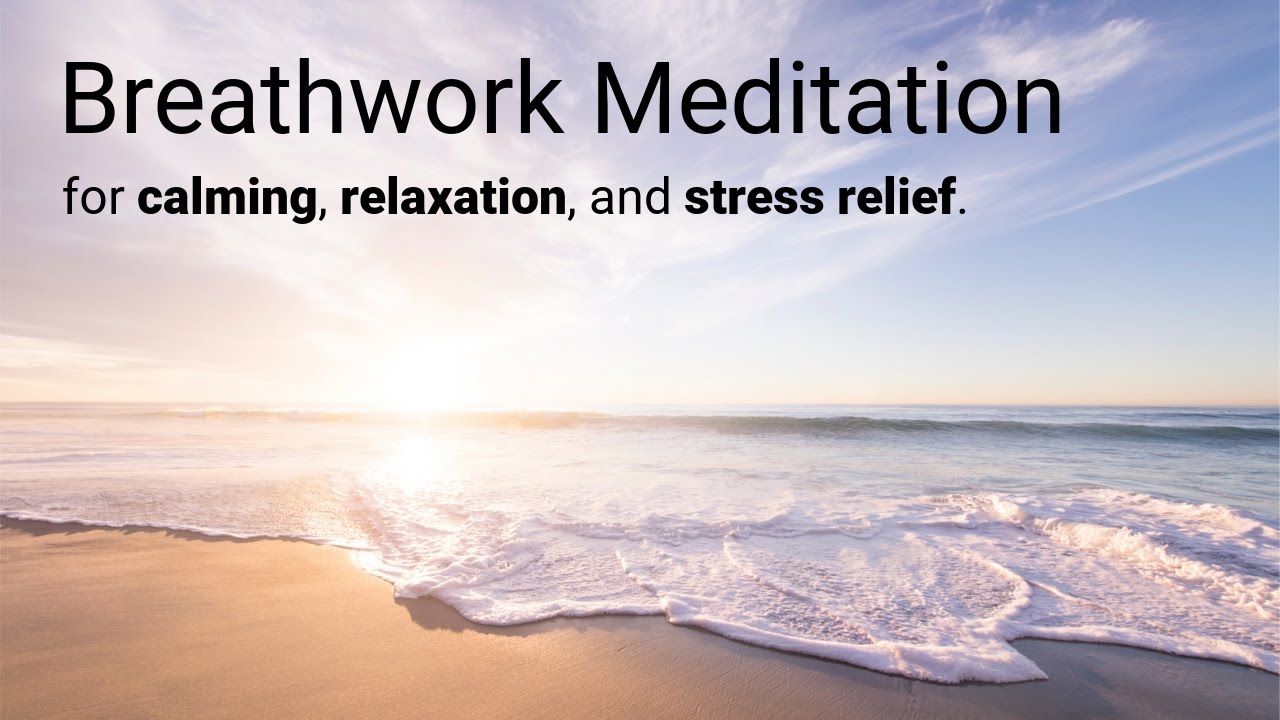
Breathwork for Beginners: A Comprehensive Guide to Enhanced Well-being
In today’s fast-paced world, stress and anxiety have become pervasive issues affecting individuals across all demographics. While various coping mechanisms exist, one ancient practice is gaining widespread recognition for its profound impact on mental and physical health: breathwork. This comprehensive guide aims to introduce breathwork for beginners, providing a clear understanding of its benefits, techniques, and how to incorporate it into daily life.
What is Breathwork?
Breathwork encompasses a range of techniques that involve consciously manipulating breathing patterns to influence mental, emotional, and physical states. Unlike normal, often shallow, breathing, breathwork techniques encourage deeper, more intentional inhales and exhales. This intentional control can help to regulate the nervous system, reduce stress hormones, and promote relaxation. The practice is rooted in ancient traditions such as yoga and meditation, but has evolved into a modern tool for self-improvement and wellness.
The Science Behind Breathwork
The efficacy of breathwork is supported by scientific research demonstrating its impact on the autonomic nervous system. Deep, controlled breathing activates the parasympathetic nervous system, often referred to as the “rest and digest” system. This activation counteracts the effects of the sympathetic nervous system, responsible for the “fight or flight” response. By shifting the balance towards parasympathetic dominance, breathwork can lower heart rate, reduce blood pressure, and decrease levels of cortisol, the primary stress hormone. Furthermore, increased oxygen intake from deeper breathing can improve cognitive function and boost energy levels.
Benefits of Breathwork for Beginners
For those new to the practice, understanding the potential benefits can be highly motivating. Here are some key advantages of incorporating breathwork into your routine:
- Stress Reduction: Perhaps the most well-known benefit, breathwork techniques can quickly calm the mind and body, reducing feelings of anxiety and stress.
- Improved Sleep: Regular breathwork practice can promote relaxation and improve sleep quality by regulating the nervous system.
- Enhanced Emotional Regulation: By becoming more aware of your breath, you can gain greater control over your emotional responses.
- Increased Energy Levels: Deep breathing increases oxygen flow to the brain and body, boosting energy and reducing fatigue.
- Pain Management: Breathwork can help manage chronic pain by reducing muscle tension and promoting relaxation.
- Improved Focus and Concentration: Certain breathwork techniques can enhance cognitive function and improve focus.
Essential Breathwork Techniques for Beginners
Several breathwork techniques are particularly suitable for beginners. These methods are simple to learn and can be practiced virtually anywhere.
Diaphragmatic Breathing (Belly Breathing)
Diaphragmatic breathing, also known as belly breathing, is a foundational technique that encourages the use of the diaphragm, the primary muscle involved in breathing. This method helps to slow the heart rate and promote relaxation.
- Lie on your back with your knees bent and feet flat on the floor.
- Place one hand on your chest and the other on your abdomen.
- Inhale slowly through your nose, allowing your abdomen to rise while keeping your chest relatively still.
- Exhale slowly through your mouth, allowing your abdomen to fall.
- Repeat for 5-10 minutes, focusing on the rise and fall of your abdomen.
Box Breathing
Box breathing, also known as square breathing, is a simple yet powerful technique used by Navy SEALs to maintain focus and composure under pressure. It involves equal intervals of inhalation, holding the breath, exhalation, and holding the breath again.
- Sit comfortably with your back straight.
- Inhale slowly through your nose for a count of four.
- Hold your breath for a count of four.
- Exhale slowly through your mouth for a count of four.
- Hold your breath again for a count of four.
- Repeat for 5-10 minutes, visualizing a square as you move through each step.
4-7-8 Breathing
The 4-7-8 breathing technique, developed by Dr. Andrew Weil, is designed to promote relaxation and reduce anxiety. It involves a specific pattern of inhalation, holding the breath, and exhalation to calm the nervous system.
- Sit comfortably with your back straight.
- Place the tip of your tongue against the ridge of tissue just behind your upper front teeth, and keep it there throughout the exercise.
- Exhale completely through your mouth, making a whooshing sound.
- Close your mouth and inhale quietly through your nose for a count of four.
- Hold your breath for a count of seven.
- Exhale completely through your mouth, making a whooshing sound, for a count of eight.
- Repeat the cycle at least four times.
Alternate Nostril Breathing (Nadi Shodhana)
Alternate nostril breathing, or Nadi Shodhana, is a yogic technique that balances the left and right hemispheres of the brain, promoting a sense of calm and equilibrium. This is a slightly more advanced breathwork practice, but still accessible breathwork for beginners.
- Sit comfortably with your back straight.
- Close your right nostril with your right thumb.
- Inhale deeply through your left nostril.
- Release your right nostril and close your left nostril with your right ring finger.
- Exhale through your right nostril.
- Inhale through your right nostril.
- Release your left nostril and close your right nostril with your right thumb.
- Exhale through your left nostril.
- Repeat for 5-10 minutes, alternating nostrils with each breath.
Tips for Incorporating Breathwork into Your Daily Routine
Making breathwork a regular part of your life can yield significant benefits. Here are some practical tips to help you incorporate these techniques into your daily routine:
- Start Small: Begin with just 5-10 minutes of breathwork each day and gradually increase the duration as you become more comfortable.
- Find a Quiet Space: Choose a quiet and comfortable environment where you can relax and focus on your breath.
- Set a Reminder: Use a calendar or app to remind you to practice breathwork at a specific time each day.
- Combine with Other Practices: Integrate breathwork with other relaxation techniques such as meditation or yoga. [See also: Benefits of Meditation for Stress Relief]
- Be Patient: It may take time to experience the full benefits of breathwork. Be patient and consistent with your practice.
- Listen to Your Body: If you feel dizzy or uncomfortable at any point, stop and return to normal breathing.
Common Mistakes to Avoid
While breathwork is generally safe, it’s important to avoid common mistakes that can hinder your progress or cause discomfort.
- Forcing the Breath: Avoid straining or forcing your breath. The goal is to breathe deeply and naturally, without tension.
- Hyperventilating: Be mindful not to breathe too rapidly or deeply, as this can lead to hyperventilation and dizziness.
- Ignoring Discomfort: If you experience any discomfort, such as lightheadedness or chest pain, stop the exercise immediately.
- Practicing in Unsuitable Environments: Avoid practicing breathwork in environments that are polluted or distracting.
- Expecting Immediate Results: Understand that the benefits of breathwork may take time to manifest. Be patient and persistent with your practice.
Advanced Breathwork Techniques
Once you’ve mastered the basic techniques, you may want to explore more advanced forms of breathwork. These techniques often involve specific breathing patterns and visualizations to achieve deeper states of relaxation and self-awareness. Examples include Holotropic Breathwork and Rebirthing Breathwork. These practices are best learned under the guidance of a certified breathwork facilitator. [See also: Finding a Breathwork Practitioner Near You]
Conclusion: Embracing Breathwork for a Healthier Life
Breathwork offers a powerful and accessible tool for enhancing mental, emotional, and physical well-being. By incorporating simple breathwork techniques into your daily routine, you can reduce stress, improve sleep, boost energy levels, and cultivate a greater sense of inner peace. Whether you’re a beginner or an experienced practitioner, the journey of breathwork is a lifelong exploration of the profound connection between breath and life. As a beginner, remember to be patient with yourself, listen to your body, and enjoy the transformative power of conscious breathing. Start your breathwork journey today and unlock the numerous benefits it has to offer. The accessibility of breathwork for beginners makes it a universally applicable tool for self-improvement. Remember to consult with a healthcare professional if you have any underlying health conditions before starting a new breathwork practice. With consistent practice, breathwork can become an integral part of your wellness routine, leading to a healthier, happier, and more balanced life. This powerful practice is truly breathwork for beginners and beyond!

